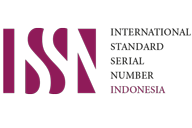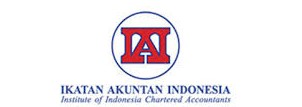Analisis Praktik Corporate Social Responsibility (CSR) Saat Pandemi Covid-19 pada Perusahaan Farmasi
Abstract
This study aims to analyze: 1) the level and quality of Corporate Social Responsibility (CSR) disclosure during the Covid-19 in pharmaceutical companies based on the 2021 GRI Standards, 2) Corporate Social Responsibility (CSR) practiced by pharmaceutical companies in helping to overcome the Covid-19 based on the 2021 GRI Standards. This research is a qualitative research using content analysis methods. The research was conducted on pharmaceutical sector companies in Indonesia by taking 4 samples of companies, namely PT Indofarma Tbk, PT Kalbe Farma Tbk, PT Phapros Tbk, and PT Sido Muncul Tbk. The data used is data for 2019-2020 when the Covid-19 entered Indonesia. The research data comes from the company's sustainability report. The results of content analysis show that the Covid-19 has played a major role in the disclosure of Corporate Social Responsibility (CSR) in the pharmaceutical sector. Two of the four companies that were the subject of the study had quite high Corporate Social Responsibility (CSR) disclosures, namely PT Kalbe Farma and PT Sido Muncul Tbk. Four companies that are active research subjects provide assistance in the form of donations to the community in efforts to tackle the Covid-19.
References
Bahadar, S., & Zaman, R. (2022). COVID-19 and CSR disclosure: evidence from New Zealand. China Accounting and Finance Review.
Barnett, M. L. (2007) “Stakeholder influence capacity and the variability of financial returns to corporate social responsibility,” Limits to Stakeholder Influence: Why the
Business Case Won’t Save the World, 32(3), pp. 56–78. doi: 10.4337/9781788970693.00008.
Bouten, L. et al. (2011) “Corporate social responsibility reporting: A comprehensive picture?,” Accounting Forum, 35(3), pp. 187–204. doi: 10.1016/j.accfor.2011.06.007.
Cavanagh, S. (1997) “Content analysis: concepts, methods and applications,” Nurse Researcher, 4(3), pp. 5–13. doi: 10.7748/nr1997.04.4.3.5.c5869.
Chapman, R. and Milne, M. J. (2004) “The triple bottom line: How New Zealand companies measure up,” Corporate Environmental Strategy, 11(2), pp. 3–16.
Corazza, L. et al. (2020) “Sustainability reporting after the Costa Concordia disaster: a multi-theory study on legitimacy, impression management and image restoration,” Accounting, Auditing and Accountability Journal, 33(8), pp. 1909–1941. doi: 10.1108/AAAJ-05-2018-3488.
Costa, R. and Menichini, T. (2013) “A multidimensional approach for CSR assessment: The importance of the stakeholder perception,” Expert Systems with Applications, 40(1), pp. 150–161. doi: 10.1016/j.eswa.2012.07.028.
Deegan, C., Rankin, M. and Voght, P. (2000) “Firms’ Disclosure Reactions to Major Social Incidents: Australian Evidence,” Accounting Forum, 24(1), pp. 101–130. doi: 10.1111/1467-6303.00031.
Deng, X. et al. (2020) “External corporate social responsibility and labor productivity: A S-curve relationship and the moderating role of internal CSR and government subsidy,” Corporate Social Responsibility and Environmental Management, 27(1), pp. 393–408. doi: 10.1002/csr.1877.
Droppert, H. and Bennett, S. (2015) “Corporate social responsibility in global health: an exploratory study of multinational pharmaceutical firms.”
Elkington, J., & Rowlands, I. H. (1999). Cannibals with forks: The triple bottom line of 21st century business. Alternatives Journal, 25(4), 42
Endiana, D. M. (2019) “Mplementasi Corporate Governance Pada Corporate Social Responsibility Terhadap Nilai Perusahaan,” 1, Pp. 92–100.
Frynas, J. G. (2009). Beyond corporate social responsibility. Oil Multinationals and Social Challenges, 131-132.
García-sánchez, A. (2020) “Corporate Social Responsibility during COVID-19 Pandemic,” pp. 1–21. doi: 10.3390/joitmc6040126.
George, D. and T., R. (1981) “Moral Responsibility and the Self,” The Oxford Handbook of the Self. doi: 10.1093/oxfordhb/9780199548019.003.0022.
Haji, A. A. (2013) “Corporate social responsibility disclosures over time: Evidence from Malaysia,” Managerial Auditing Journal, 28(7), pp. 647–676. doi: 10.1108/MAJ-07-2012-0729.
He, H. and Harris, L. (2020) “The Impact of Covid-19 Pandemic on Corporate Social Responsibility and Marketing Philosophy,” Journal of Business Research. doi: 10.1016/j.jbusres.2020.05.030.
Hedberg, C.-J. and Malmborg, F. von (2003) “Initiative And Corporate Sustainability Reporting,” 164, Pp. 153–164.
Holzmann, V. and Spiegler, I. (2011) “Developing risk breakdown structure for information technology organizations,” International Journal of Project Management, 29(5), pp. 537–546.doi:10.1016/j.ijproman.2010.05.002.
Johnson, B. R., Connolly, E. and Carter, T. S. (2011) “Corporate social responsibility: The role of Fortune 100 companies in domestic and international natural disasters,” Corporate Social Responsibility and Environmental Management, 18(6), pp. 352–369. doi: 10.1002/csr.253.
Kementrian Perindustrian (2021) “Membangun Kemandirian Industri Farmasi Nasional,” Buku Analisis Pembangunan Industri, pp. 1–33. Available at: https://www.kemenperin.go.id/download/26388/Buku-Analisis-Industri-Farmasi-2021.
Mahmud, A., Ding, D. and Hasan, M. M. (2021) “Corporate Social Responsibility: Business Responses to Coronavirus (COVID-19) Pandemic,” SAGE Open, 11(1). doi: 10.1177/2158244020988710.
McAdam, R. and Leonard, D. (2003) “Corporate social responsibility in a total quality management context: Opportunities for sustainable growth,” Corporate Governance: The international journal of business in society, 3(4), pp. 36–45. doi: 10.1108/14720700310497104.
Michael, B. (2003) “Corporate social responsibility in international development: An overview and critique,” Corporate Social Responsibility and Environmental Management, 10(3), pp. 115–128. doi: 10.1002/csr.41.
Parker, L. (2014) “Constructing a research field: A reflection on the history of social and environmental accounting,” Social and Environmental Accountability Journal,34(2),pp.87–92.doi:10.1080/0969160X.2014.938472.
Raimo, N. et al. (2021) “Corporate social responsibility in the covid-19 pandemic period: A traditional way to address new social issues,” Sustainability (Switzerland), 13(12), pp. 1–16. doi: 10.3390/su13126561.
Retno, R. D. and Priantinah, D. (2012) “Pengaruh Good Corporate Governance Dan Pengungkapan Corporate Social Responsibility Terhadap Nilai Perusahaan (Studi Empiris Pada Perusahaan Yang Terdaftar Di Bursa Efek Indonesia Periode 2007-2010),” Nominal, Barometer Riset Akuntansi dan Manajemen, 1(2), pp. 289–302. doi: 10.21831/nominal.v1i2.1000.
Safitri, N. F. W. (2013) “Analisa Pelaporan Pengungkapan Corporate Social Responsibility (Csr) Berdasarkan Pedoman Global Reporting Initiatives (Gri),” Pp. 1–18.
Sayekti, Y. (2011). Strategic Corporate Social Responsibility (CSR): Slack Resources, Kinerja Keuangan, dan Earnings Response Coefficient. Disertasi. Program Pascasarjana Ilmu Akuntansi Fakultas Ekonomi dan Bisnis Universitas Indonesia.
Sembiring, H. (2012) “Analisis Pengaruh Karakteristik Perusahaan Terhadap Kelengkapan Pengungkapan Dalam Laporan Tahunan Perusahaan Manufaktur Yang Terdaftar Di Bursa Efek Indonesia,” 4, Pp. 68–77.
Soediantono, D. (2022) “Literature Review of ISO 26000 Corporate Social Responsibility (CSR) and Implementation Recommendations to the Defense Industries Literature Review ISO 26000 Corporate Social Responsibility (CSR) dan Usulan Penerapannya Pada Industri Pertahanan,” Journal of Industrial Engineering & Management Research, 3(2), pp. 73–87.
Sri Ardani, N. K. and Mahyuni, L. P. (2020) “Penerapan Corporate Social Responsibility (CSR) dan Manfaatnya Bagi Perusahaan,” Jurnal Manajemen Bisnis, 17(1), p. 12. doi: 10.38043/jmb.v17i1.2339.
Sung, M. et al. (2021) “Pharmaceutical industry’s engagement in the global equitable distribution of covid-19 vaccines: Corporate social responsibility of eul vaccine developers,” Vaccines, 9(10), pp. 1–22. doi: 10.3390/VACCINES9101183.
Szejnwald, H., Jong, M. De and Levy, D. L. (2009) “The rise of the Global Reporting Initiative : A case of institutional entrepreneurship Building institutions based on information disclosure : lessons from GRI ’ s sustainability reporting,” Journal of Cleaner Production, 17(6), pp. 571–580. doi: 10.1016/j.jclepro.2008.12.009.
Triana, A., Sulastri, S. and Humaedi, S. (2020) “Ragam Praktik Csr Selama Pandemi Covid-19,” Prosiding Penelitian dan Pengabdian kepada Masyarakat, 7(2), p. 435. doi: 10.24198/jppm.v7i2.28869.
Yuliana, R., Purnomosidhi, B. and Sukoharsono, E. G. (2008) “Pengaruh Karakteristik Perusahaan Terhadap Pengungkapan Corporate Social Responsibility (Csr) Dan Dampaknya Terhadap Reaksi Investor,” Jurnal Akuntansi dan Keuangan Indonesia, 5(2), pp. 245–276. doi: 10.21002/jaki.2008.12.
Yusuf, W. (2007). Membedah konsep dan aplikasi CSR. Gresik: Faseho Publishing.







.png)
.png)
